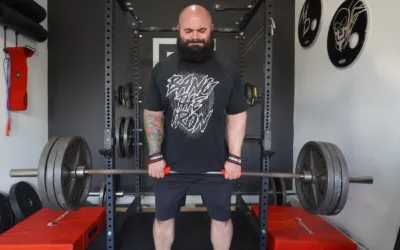What is RPE? A Guide For First Responders
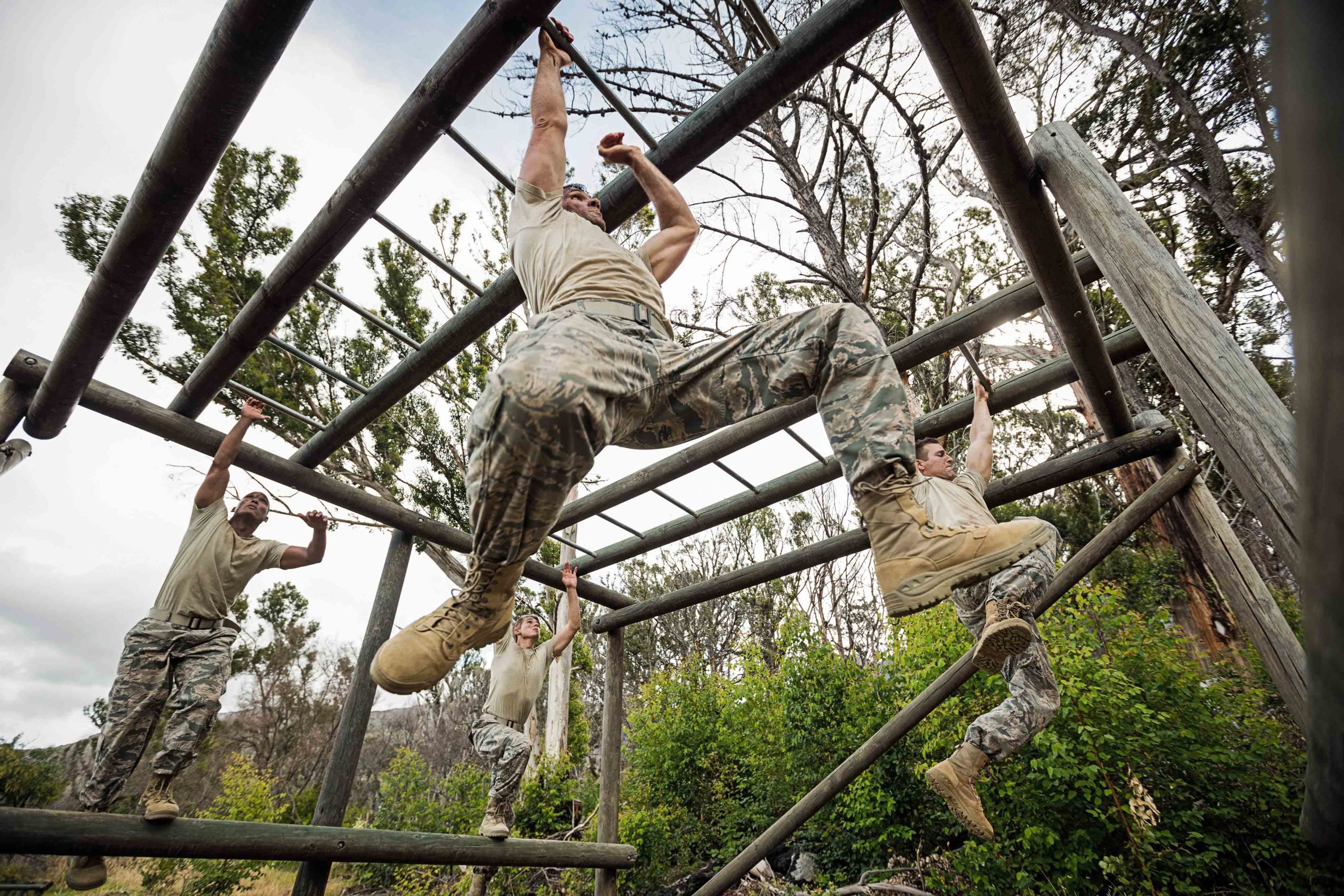
Firefighters, law enforcement, paramedics, military, EMT’s, security, doctors and nurses — you all have some of the most intense jobs on the planet. You’re often handling situations in which other people’s lives are in your hands. Since being physically fit is part of your job description, how do you train around the stress of such a hectic work life?
Brandon Robb is the founder and head coach of HEROIC Athletics @heroic.athletics and Golf HEROIC @golf.heroic—he’s worked with athletes for over a decade. First responders (fire, police, military), golfers, Crossfitters, obstacle course racers, and hockey players all turn to him for performance gains, injury prevention, and competition prep.
In this blog, he outlines his four rules for training under heavy work life stress: be honest with yourself, keep your exertion in the gym between 5-8, show up every day, and prioritize rest.

When Your Workouts Fall Apart
Some days, it takes so much more effort to make it into the gym in the first place, let alone give it your all. Your coach has programmed the workout to be heavier than the week before, or faster, or just all around more soul crushing than a similar workout last week.
So you dive into your warmup and nothing seems exceptionally different. You get the blood flowing, do some mobility, movement patterning and sequencing, then start loading up the bar for back squats that are on tap for the day.
Your squat cycle has been a gradual build over the past several weeks and today calls for 5 sets of 5 reps at 85% of your last recorded 5-rep max.
You load the bar with some weight for the warm up sets — 50% feels heavier than it usually does.
You add on 20 more pounds for a few warm up reps and it’s feeling extra heavy. 70% feels like a working set already. You load up 80% and feel like you need a spot for the 5th rep.
Good God, you nearly poop your pants.
“How the f*** am I supposed to hit 85% today?”
As humans, we tend to look at things for face value, rather than dive into the question: why do the weights feel exceptionally heavy today?
First Responders and Daily Stress
For most of the population, life is life with minimal variability throughout the day. Wake up, go to work, have lunch, stop at the gym on the way home, get home, see family, eat dinner, go to bed, repeat.
Within this pattern, there are various stressors that affect our CNS (Central Nervous System). Chemically, your body does not differentiate one type of stress from another. Your body recognizes the stress and subsequently kicks your sympathetic nervous system into fight or flight.
Back in the cavemen days, this was beneficial. It was move fast or get eaten. Today, there are less drastic life or death situations… for most of us anyway.
Most of us handle general stressors of finances, relationships, demands from your boss, etc. These all have an impact on your sympathetic nervous system and CNS. Chemically, it is similar to being chased by a saber tooth tiger.
But as a first responder, your job demands a higher adaptation to stressful situations.
This results in many potential health consequences such as PTSD and frying your adrenal glands which negatively affects hormones, metabolism and more. Your hormones affect your body’s ability to lose weight or improve body composition.
So take “regular person” stress of day-to-day life, then throw in things like shift work, poor sleep patterns, inconsistent nutrition, emotionally heavy response calls, high stress life-or-death situations, and more — that’s the reality for many first responders.
So what’s the answer to the question, “How the f*** am I supposed to hit 85% today?”
Short answer… you’re not.

You Work too Hard to Not See Progress
Find Your Perfect Training Plan
Options for Every Goal
Training plans from real coaches covering any goal, fitness level, and number of sessions per week.
The Best Coaches
Get coached by the best. Olympians, ex-NFL stars, Titan Games Winners, Sport Scientists and more.
Starting at $1/ day
With many options including a free 7 day trial, you can try out programming before you commit.
What is Rate of Perceived Exertion &
How Do You Use it?
What many people don’t realize is that ALL 23 hours outside of the gym have an effect on the results that happen inside the gym.
In order to see results from the gym, there needs to be a certain level of stress involved partnered with recovery to see performance and body composition improvements. It’s important to realize that if you’ve been battling various types of stress throughout the day, this WILL impact your body’s CNS and subsequently, your ability to perform in the gym. It can easily affect your ability to reach the goals you’re chasing.
So, how do we get around this? Enter RPE.
RPE stands for Rate of Perceived Exertion. It’s a scale of effort output based on how it FEELS to perform an exercise.
Many coaches shy away from this simply because it can provide their athletes with an excuse to push the limits or slack a little in a training session, which ultimately impacts the results from the program.
Personally, I’m a big fan of RPE, especially considering that the majority of my clients are First Responders. It’s important to factor in your daily stress levels when training and since it’s IMPOSSIBLE for me to factor in every known stressor from your life (you may not even know what is causing your stress), I’d rather educate my athletes about RPE.
RPE is broken down into a scale of how something feels. Generally it is a number out of 10 (though sometimes it can be out of 20). It’s broken down as follows:
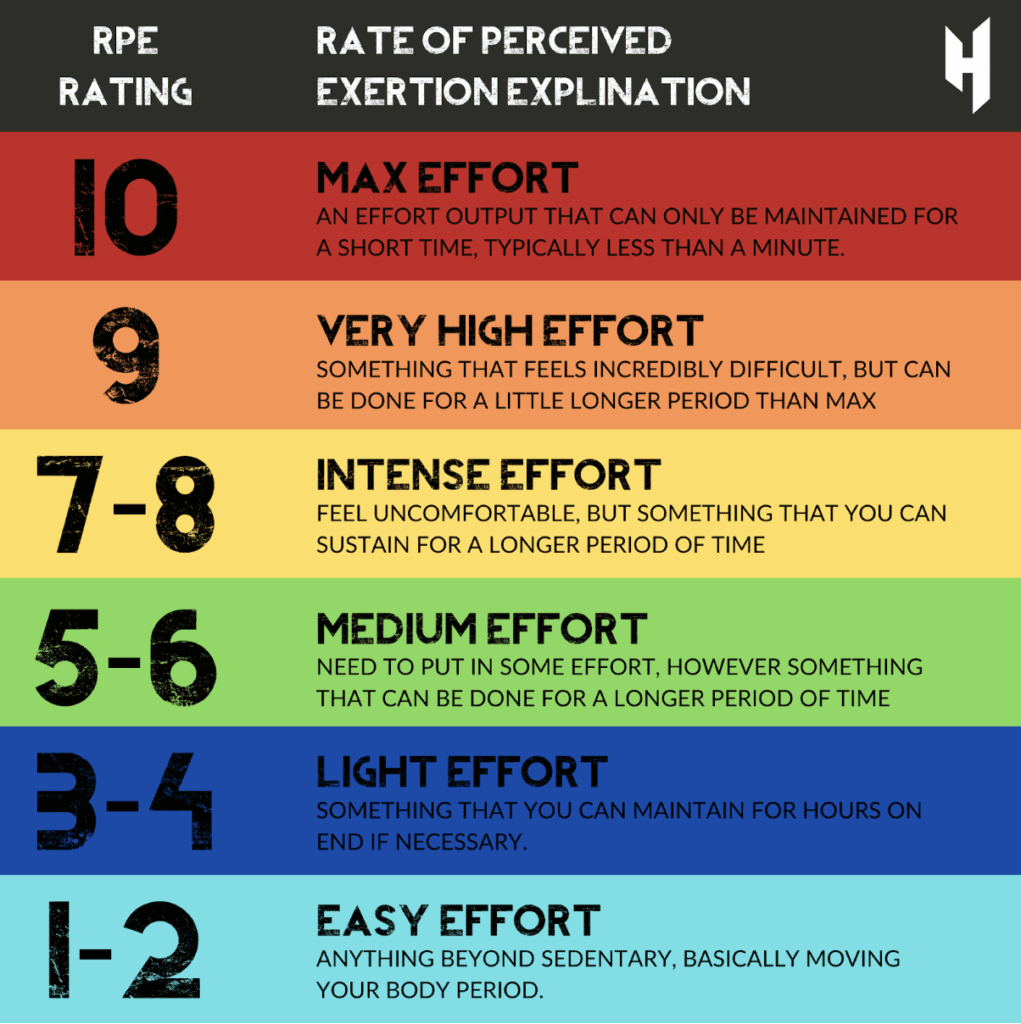
Typically, in order to see improvements in the gym, you need to be working at an average RPE of 7 or higher (in most cases). Notice how this says nothing about percentages or specific weights you need to hit.
This only means your specific lift or workout should FEEL difficult. The problem for athletes is that there needs to be a level of honesty with themselves about how something truly feels.
Do your deadlift sets feel like an 8 but you’re negotiating with yourself that they feel like a 5?
I often argue that FEW people can really give a 10/10 effort, because few know what that actually feels like. And truthfully, as a coach, I only want to see a 10/10 effort once in a blue moon. For athletes, this is on game day when they need to perform their best. And for first responders, they need to be #AlwaysReady to perform. I almost never want to see a 10/10 effort in the gym. Almost, anyway.
Level Up Your Training
With TrainHeroic’s immersive training app
TrainHeroic does everything you wish your old gym notebook could do.
Take the guesswork out of training with built-in exercise instruction and basic training programs. Compete against yourself and others. Track your performance and readiness. Smash your goals.
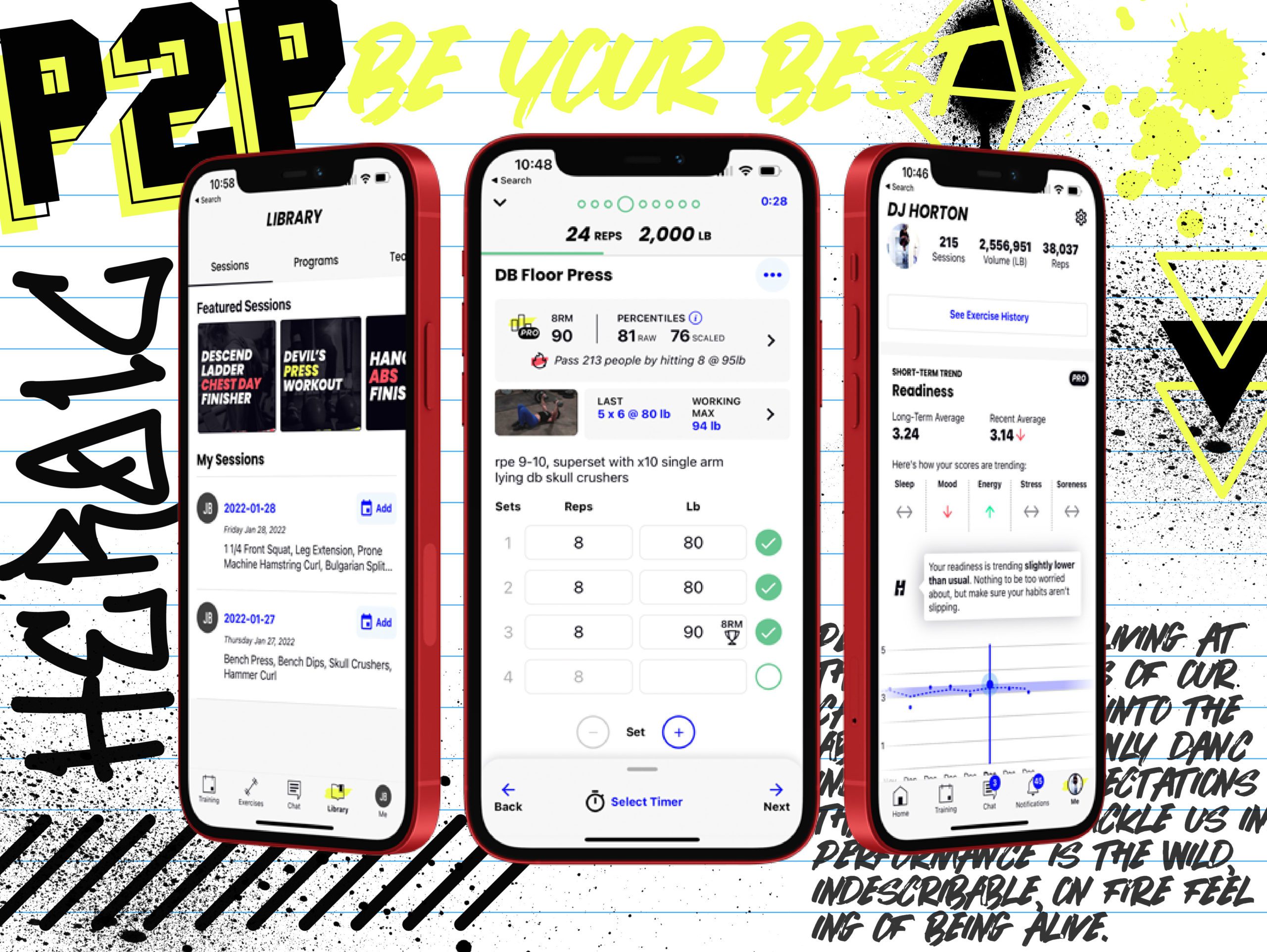
4 Rules of Thumb for RPE
As a first responder, it’s important to ensure you’re ready to perform on shift and to take that priority into account when it comes to your workouts.
I encourage my athletes in high stress jobs to keep these four things in mind.
Rule # 1: Be honest with yourself (and your coach).
This one seems easy, but you might be surprised in the moment. Really pay attention to your body and be honest with where you’re at and how you’re feeling that day. If you can’t hit the weights prescribed, that’s ok. Just ensure that your training session truly feels like a 7-9/10.
Being honest with yourself, regardless of what your program says, you want your training to live in the 7-9 range most of the time. If you catch yourself inflating or deflating your RPE score for the day — ask yourself, “why?”
The RPE system can only work for you if you’re truly honest with yourself.
Rule # 2: When training between shifts, keep your RPE around 5-8/10.
You need to be ready for anything on shift, so torching yourself in the gym that day may not be the best way to approach the day’s training.
Try to adjust your mindset around keeping reps in the tank or lowering the load based on how you feel. Scaling back on your effort in the gym won’t set you back, because you’re going to encounter stress during your job anyway. If anything, keeping your RPE closer to 5 when training between shifts will help your future recovery capacity (which is essential for progress).
Rule # 3: SHOW UP EVERY DAY.
My experience is that too many first responders neglect training entirely. And so building consistency in training is important. It should be a routine part of your day like brushing your teeth. And yes, I mean showing up in the gym EVERY DAY. Again, this is not to say you should gas yourself every single training session. This nuance is important.
Instead, in a 7 day week, there should be maybe 1 day of going nuclear, 2-4 days of medium to intense effort, and 1-4 days of light to medium effort. This way you have 3-5 days per week where you’re training relatively hard and 2-4 days where you’re focusing on mobility, recovery, flushing out your muscles with low intensity cardio, and just generally staying healthy.
When dosed appropriately, this method of training can ensure you’re ready to perform on the job when needed most AND that you make progress in the gym.
Rule # 4: Focus on recovery and sleep whenever possible.
This is a difficult one for most of you working long hours or night shifts as many first responders do. But there’s a difference between prioritizing sleep and simply winging it. Often, you cannot control when your shifts are, but you can control the attention and effort you put into your sleep patterns.
This means potentially sacrificing time with friends, family, or having a social life because you need to recover harder than most people do. Try having a colleague be your gym partner, so you can have a social life WHILE training. Not to mention it’s much more productive and conducive to your body composition goals to use the gym as your social hour versus the bar.
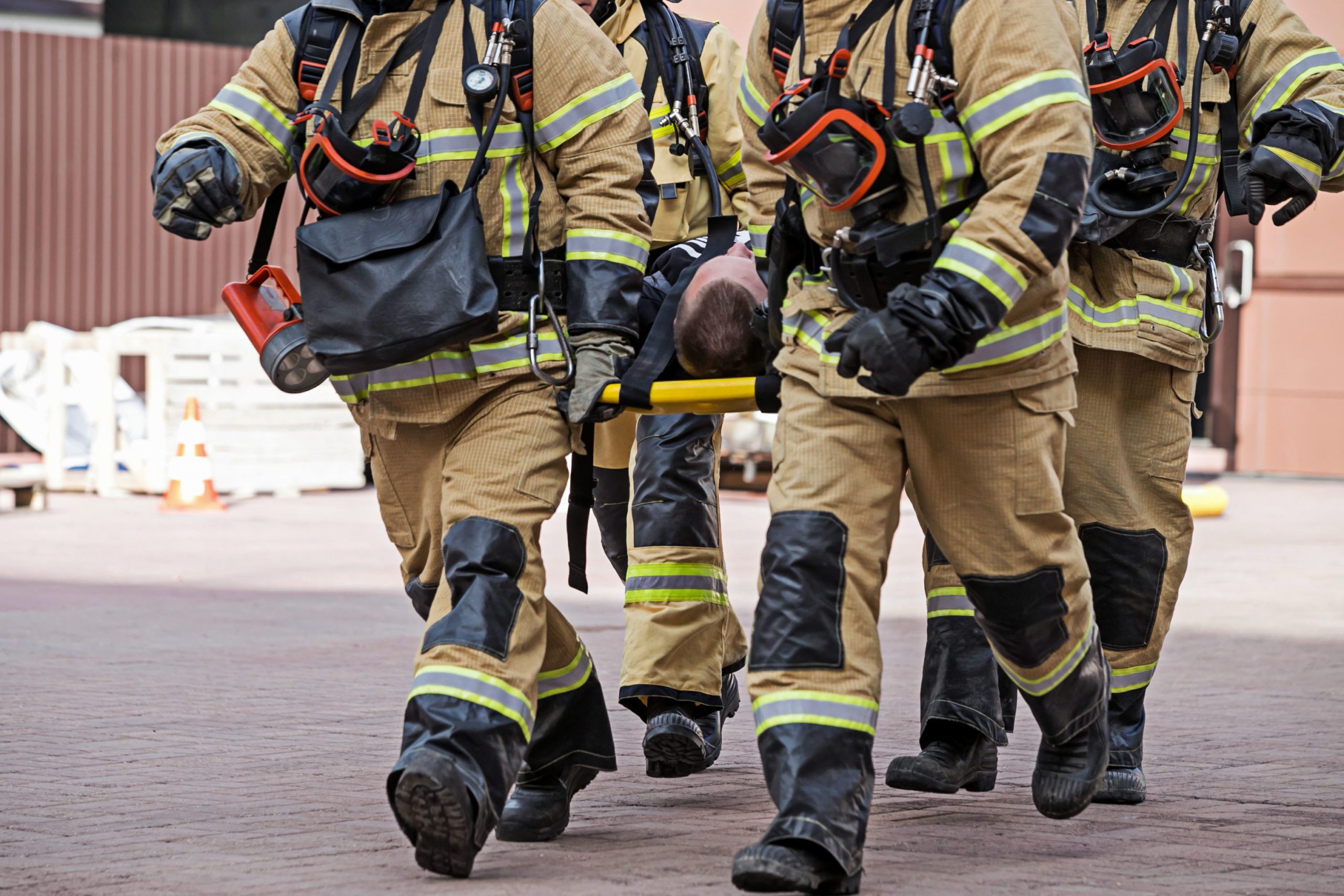
Learning how to dose your training effectively, come up with appropriate strategies for sleep/nutrition/recovery, AND ensuring you can perform the best you can on the job can be a tricky balancing act.
Just remember, the best path to getting results is to focus on CLARITY, CONSISTENCY and COMMUNICATION. With these 3 C’s you will 100% get the results you are looking for.
And next time you step under the bar or show up to the workout, don’t beat yourself up if you can’t hit the prescribed weights, or time, or whatever. As long as you’re giving your honest effort for THAT DAY, showing up and being consistent, the strength and conditioning will come.
Want Training Tips, Exercise Guides & Knowledge Bombs Sent to Your Inbox?
Sign up for the FitNerd newsletter from TrainHeroic
Related articles
Top 6 Exercises for Managing Shoulder Injuries
What to Do for an Injured Shoulder After 6 years of coaching at the highest levels across multiple disciplines, the most common issues I see in my sports therapy clinic have to do with the shoulder. Statistics show us that shoulders are the most commonly injured area...
Ballistic vs. Plyometric: Understanding Dynamic Movements
Have you heard the Russian proverb, “once you stop jumping, you start dying”? A little dramatic and fatalistic maybe, but the basic idea centers around maintaining your body’s capacity to perform explosive plyometrics. As we age, we become more risk-averse — injuries...
Winter Warfare: How to Bulk Up This Season
It’s that time of the year to wreak havoc and prepare for a massive winter bulk! But wait, what is a winter bulk? What does it take, and how do we achieve it? Joseph Lucero (CSCS), owner of Harvesting Strength, is a powerlifter and strongman coach with years of...

Join the community
Sign up for the latest training news and updates from TrainHeroic

About TrainHeroic
Support
Made with love, sweat, protein isolate and hard work in Denver, CO
© 2021 TrainHeroic, Inc. All rights reserved.



